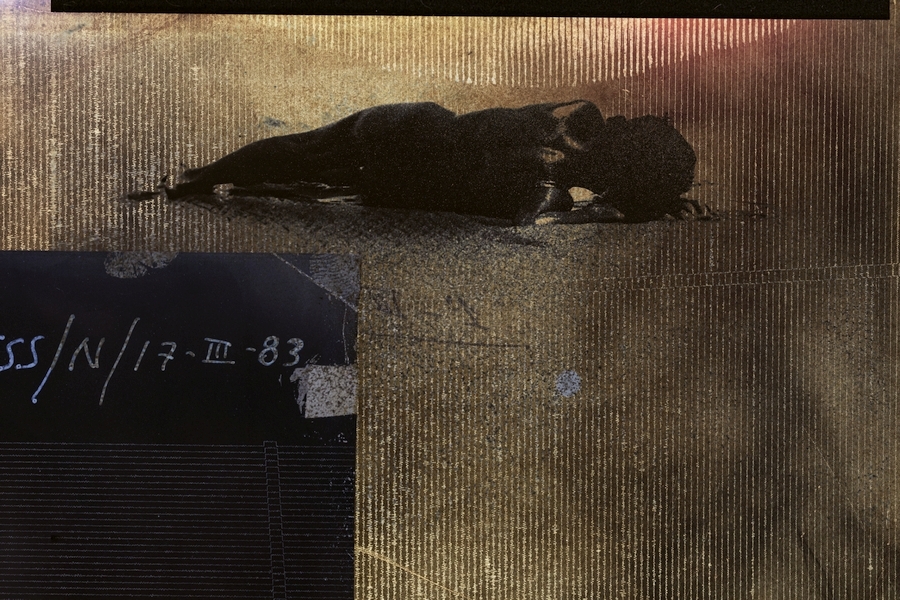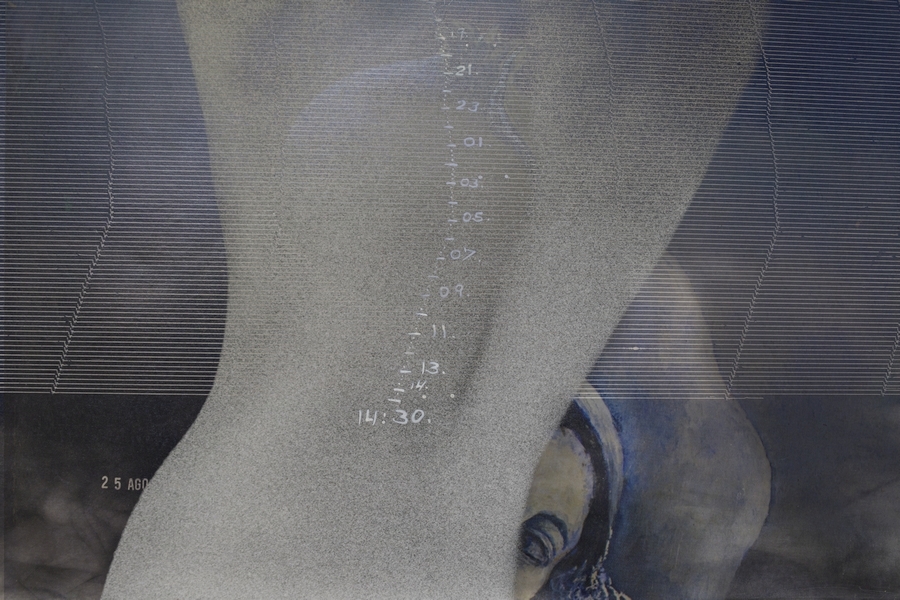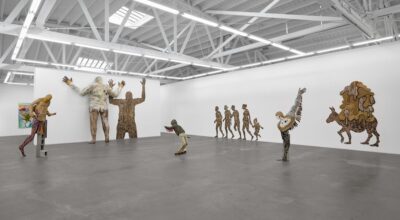
MURIEL HASBUN. RECORD: CULTURAL PULSES
By Gabriela Rosso
Record: to repeat, reiterate, recite; rehearse, get by heart,» from Old French recorder «tell, relate, repeat, recite, report, make known» and directly from Latin recordari «remember, call to mind, think over, be mindful of,» from re- «restore» (see re-)cor (genitive cordis) «heart» (as the metaphoric seat of memory, as in learn by heart). Pulse: directly from Latin pulsus (in pulsus venarum «beating from the blood in the veins»).
As if it were a record of her personal history, Muriel Hasbun takes a journey guided by the emotional pulse of her paternal Christian Palestinian and French Polish Jewish maternal family, blending it with her childhood in El Salvador. This is how, in Saints and Shadows and in Protegida and Auvergne-Toi et Moi, we see her search to make visible a family that, given cultural persecution and prejudice, was forced to become invisible.
Images built with letters, postcards, documents, and testimonies give life to many stories and give beauty to the harshness of a violent reality.
Hasbun’s photographic work allows her to delve into and reconfigure her family’s history, to make way not only for her multiple migrations, but also to trace the path that so many migrants have had to travel. These photographs carry the pulses of a particular time and place, which could be anyone’s anywhere in the world and which, like our own heartbeats, can guide us if we pay attention to their rhythm.



Is it possible to trace our journey through a visual record of the land’s pulses? Can we metaphorically mark our personal and cultural legacies onto the land and in the process make it our “terruño” and diasporic homeland? Can we repair misrepresentation and erasure?
Muriel Hasbun
Likewise, with her photographs, Hasbun opens the way to other pulses which ultimately and collectively mix with her own; that is, she immerses us in the movements of the earth itself.
In Pulse: New Cultural Registers Hasbun is fascinated by the seismographic records of El Salvador, and she records them with emotion and camera, and then merges them with the rescued cultural legacy left by Janine Janowski, her mother, and director of Galería El Laberinto, an epicenter of cultural activity during the Salvadoran civil war between the 1980s and 90s.
Her work is a fusion of the historical and artistic past of a country, with the emotional vision of an artist who refuses the erasure of family memory and collective history, framed within the artistic production of generations in El Salvador.
RECORD: Cultural Pulsesthus becomes a construct of her own identity, through the records of her family history and of her country oforigin. The pulse of art and life is seen from Hasbun’s visual, transnational, and transcultural metaphor. In her hands, photography becomes a means to evoke the drives and narratives of our realities, always subjective and learned by heart.



My photographic work is a process of re-encounter, of synthesis, and of re-creation. Through it, past and present become interlaced in a renewed configuration; the Palestinian desert and Eastern European ash sift, shift and blend in the volcanic sands of El Salvador, to form the texture of the path on which I define and express my experience.
Muriel Hasbun
MURIEL HASBUN. RECORD: CULTURAL PULSES
RoFa Projects, 10008 Hemswell Ln Potomac, MD
From January 22nd until February 28th, 2021
También te puede interesar
HELIO. EL TALLER DE MIKE
"helio TM" is a group exhibition of Mexican artists who have employed the use of traditional heliogravure in their practice. This photographic printing process has seen a resurgence in recent years, particularly in Mexico...
HECTOR DIONICIO MENDOZA: BUSCANDO FUTURO
As an artist, curator, and educator based in the agricultural community of the Salinas Valley in California, Dionicio Mendoza (b.1969, Uruapan, Michoacan, MX) embraces Latinx/e futurism while exploring themes of migration and the environment,...
CAMINANDO JUNTAS: POR ELLAS Y POR NOSOTRAS
Tomando como base el arte como herramienta social y de transformación de la realidad, la exposición virtual "Caminando juntas: Por ellas y por nosotras", presentada por RoFa Projects (Maryland, EEUU) y George Mason University...



